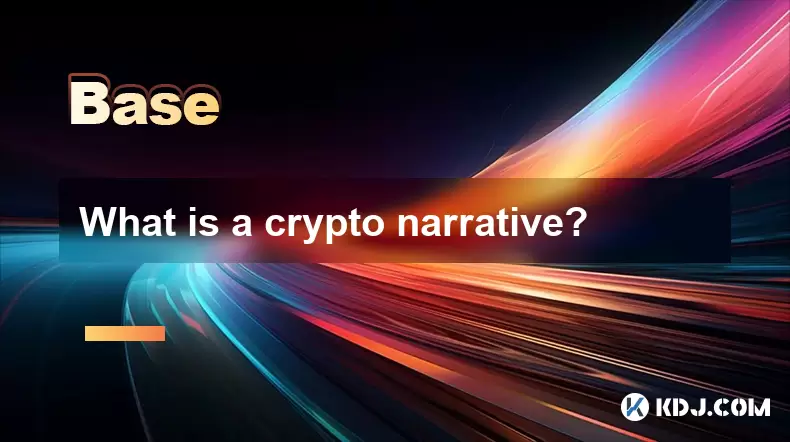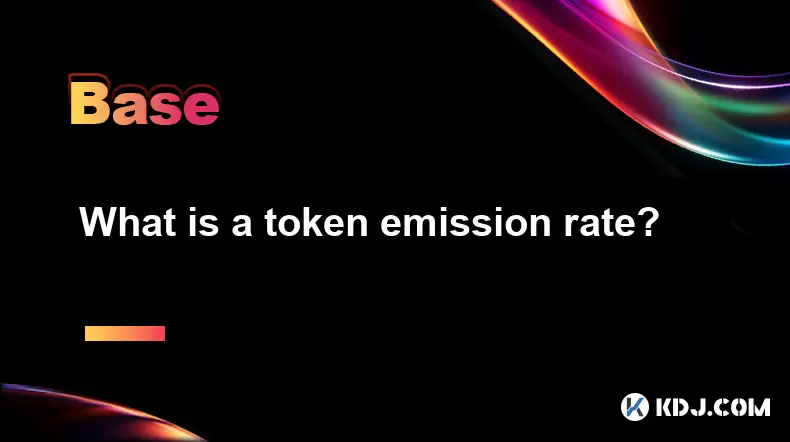-
 Bitcoin
Bitcoin $108,708.8110
0.60% -
 Ethereum
Ethereum $2,561.6057
1.91% -
 Tether USDt
Tether USDt $1.0001
-0.03% -
 XRP
XRP $2.2795
0.57% -
 BNB
BNB $662.2393
1.00% -
 Solana
Solana $153.1346
3.74% -
 USDC
USDC $1.0000
0.00% -
 TRON
TRON $0.2877
0.97% -
 Dogecoin
Dogecoin $0.1710
3.93% -
 Cardano
Cardano $0.5871
1.61% -
 Hyperliquid
Hyperliquid $39.6663
1.68% -
 Sui
Sui $2.9032
0.79% -
 Bitcoin Cash
Bitcoin Cash $496.1879
1.71% -
 Chainlink
Chainlink $13.5807
3.01% -
 UNUS SED LEO
UNUS SED LEO $9.0777
0.61% -
 Stellar
Stellar $0.2514
4.51% -
 Avalanche
Avalanche $18.1761
1.86% -
 Shiba Inu
Shiba Inu $0.0...01173
1.72% -
 Toncoin
Toncoin $2.8010
-4.23% -
 Hedera
Hedera $0.1594
3.21% -
 Litecoin
Litecoin $87.0257
-0.53% -
 Monero
Monero $319.1217
1.79% -
 Polkadot
Polkadot $3.3853
0.68% -
 Dai
Dai $0.9999
-0.01% -
 Ethena USDe
Ethena USDe $1.0003
0.02% -
 Bitget Token
Bitget Token $4.3420
-0.97% -
 Uniswap
Uniswap $7.3772
1.39% -
 Aave
Aave $286.6277
5.61% -
 Pepe
Pepe $0.0...09994
2.33% -
 Pi
Pi $0.4589
1.76%
What is a dust attack?
A dust attack involves sending tiny crypto amounts to track wallet activity and compromise privacy through transaction analysis.
Jul 07, 2025 at 04:21 pm

Understanding the Concept of a Dust Attack
A dust attack refers to a malicious activity in the cryptocurrency ecosystem where an attacker sends tiny amounts of cryptocurrency, known as "dust," to multiple wallet addresses. These dust amounts are usually so small that they're often ignored by users or deemed insignificant for transactions. However, the primary motive behind such attacks is not financial gain but rather privacy invasion and transaction tracking.
The concept of dust itself comes from the idea of unspent transaction outputs (UTXOs) that are too small to be economically viable for further use. When these dust amounts are sent intentionally, especially in large quantities across many wallets, it becomes a dust attack. The attacker can then monitor how these funds move, potentially linking different wallet addresses to a single user or entity.
The Mechanics Behind a Dust Attack
Dust attacks typically involve several technical steps:
- Selection of Target Wallets: Attackers may choose wallets based on publicly available data, such as those used in online services or exchanges.
- Sending Small Amounts: Using automated scripts, attackers send micro-transactions (e.g., 0.00000001 BTC) to numerous addresses.
- Monitoring Transactions: Once the dust is received, if the wallet owner combines these small UTXOs with others for a transaction, the attacker can trace the flow of funds and infer ownership relationships.
This method exploits the transparent nature of blockchain ledgers, where all transactions are public and permanent. The goal is not to steal funds directly but to compromise anonymity by analyzing transaction patterns.
Why Dust Attacks Are a Privacy Concern
In the world of cryptocurrencies, privacy is a major concern for users who wish to keep their financial activities confidential. A dust attack undermines this privacy by allowing attackers to perform chain analysis. Chain analysis tools can map out relationships between different addresses and transactions, helping to identify real-world identities behind wallet addresses.
For example, if a user receives dust in two separate wallets and later uses both in a single transaction, the attacker can deduce that both wallets belong to the same person. This process, known as address clustering, is central to how dust attacks compromise privacy.
Moreover, once a wallet address is linked to a specific identity through such methods, it becomes easier for third parties — including surveillance entities or marketers — to track future transactions associated with that individual.
How to Protect Against Dust Attacks
There are several strategies users can adopt to mitigate the risks posed by dust attacks:
- Use Hierarchical Deterministic (HD) Wallets: HD wallets generate new receiving addresses for each transaction, making it harder to link transactions together.
- Avoid Combining Dust with Larger UTXOs: If you receive dust, refrain from spending it alongside larger amounts, as this could expose your other funds to tracking.
- Utilize Coin Control Features: Some advanced wallets allow users to manually select which UTXOs to spend, enabling them to avoid using dust inputs during transactions.
- Employ Mixing Services or Privacy Coins: For higher levels of anonymity, consider using mixing services or switching to privacy-focused cryptocurrencies like Monero or Zcash.
By adopting these practices, users can significantly reduce the chances of being successfully tracked through dust attacks.
Recognizing Signs of a Dust Attack
Identifying whether you've been targeted by a dust attack requires vigilance. Here's what to look for:
- Unfamiliar Incoming Transactions: Check your wallet for small, unexpected deposits that you did not request.
- Multiple Similar Transactions: If several incoming transactions have identical or nearly identical values, especially below standard transaction fees, they might be part of a dusting campaign.
- Unusual Transaction Patterns: Pay attention to any sudden changes in how your wallet interacts with the blockchain, particularly if unrelated addresses start appearing in your transaction history.
Wallet software with built-in dust detection features can help alert users when suspicious activity occurs. Staying informed about such indicators allows users to take timely action before any significant privacy breach takes place.
Responding to a Dust Attack
If you suspect that you've become a target of a dust attack, immediate action is necessary:
- Isolate Affected Addresses: Stop using the compromised addresses for any outgoing transactions to prevent further exposure.
- Do Not Spend the Dust: Spending even a small amount tied to a dust input could reveal additional information about your holdings.
- Consult Your Wallet Provider: Some wallet developers offer guidance or tools specifically designed to deal with dusting attempts.
- Consider Address Rotation Policies: Regularly changing receiving addresses can minimize the impact of any potential dusting campaigns aimed at mapping your transaction behavior.
Taking proactive measures after detecting a dust attack helps preserve long-term privacy and security within the decentralized finance space.
Frequently Asked Questions
Q: Can dust attacks lead to direct loss of funds?
A: No, dust attacks themselves do not result in theft or direct financial loss. Their purpose is primarily to compromise privacy by enabling chain analysis rather than stealing cryptocurrency.
Q: How common are dust attacks?
A: While exact statistics are hard to come by, reports suggest that dust attacks have become increasingly frequent, especially targeting users of popular wallet services and exchanges.
Q: Are all small transactions considered dust attacks?
A: Not necessarily. Legitimate small transactions occur regularly due to change outputs or micropayments. A dust attack is characterized by deliberate and widespread distribution of minuscule amounts across many wallets.
Q: Is there any legal recourse after a dust attack?
A: Currently, there are no widely recognized legal frameworks addressing dust attacks specifically. However, raising awareness and implementing preventive measures remain the most effective responses.
Disclaimer:info@kdj.com
The information provided is not trading advice. kdj.com does not assume any responsibility for any investments made based on the information provided in this article. Cryptocurrencies are highly volatile and it is highly recommended that you invest with caution after thorough research!
If you believe that the content used on this website infringes your copyright, please contact us immediately (info@kdj.com) and we will delete it promptly.
- Bitcoin, Jon Atack, and El Salvador: A Crypto Conundrum
- 2025-07-07 23:15:12
- Google, AI Chatbots, and Altcoins: Navigating the Shifting Sands of Search and Crypto
- 2025-07-07 23:15:12
- By Georgia:
- 2025-07-07 23:50:57
- Ethereum (ETH) Analyst Points: Is a Major Breakout Imminent?
- 2025-07-07 23:55:12
- BBVA's Crypto Leap: Bitcoin and Ethereum for the Masses?
- 2025-07-07 22:30:12
- Bitcoin, Strategy, and Windfalls: Decoding the Latest Moves
- 2025-07-07 22:30:12
Related knowledge

What is a user-generated content (UGC) NFT platform?
Jul 04,2025 at 01:49pm
Understanding the Concept of a UGC NFT PlatformA user-generated content (UGC) NFT platform is a digital marketplace or ecosystem where users can create, mint, and trade non-fungible tokens (NFTs) that represent ownership of original digital content they produce. Unlike traditional NFT platforms where creators often include professional artists or develo...

What is composability in DeFi?
Jul 06,2025 at 04:07pm
Understanding the Concept of Composability in DeFiComposability in DeFi refers to the ability of decentralized finance protocols and smart contracts to interact seamlessly with one another, much like building blocks that can be combined in various ways to create new financial products and services. This concept is a core innovation within the DeFi ecosy...

What is a "crypto primitive"?
Jul 05,2025 at 10:14pm
Defining the Concept of a Crypto PrimitiveIn the context of blockchain and cryptocurrency, a crypto primitive refers to a fundamental building block or foundational element used in constructing decentralized systems and cryptographic protocols. These primitives are essential for enabling secure transactions, consensus mechanisms, and smart contract exec...

What is a crypto narrative?
Jul 07,2025 at 10:56pm
Defining the Concept of a Crypto NarrativeA crypto narrative refers to the overarching story or theme that drives interest, investment, and development within a particular segment of the cryptocurrency market. Unlike traditional financial assets, cryptocurrencies often gain momentum not solely based on technical merits but through compelling narratives ...

What is a fair launch?
Jul 05,2025 at 07:31pm
Understanding the Concept of a Fair LaunchA fair launch refers to the release of a cryptocurrency or blockchain project in a manner that ensures equal opportunity for all participants. Unlike traditional token launches, which may involve private sales, venture capital funding, or pre-mining, a fair launch emphasizes transparency and decentralization. In...

What is a token emission rate?
Jul 07,2025 at 02:51am
Understanding the Basics of Token Emission RateIn the realm of cryptocurrencies, token emission rate refers to the speed or frequency at which new tokens are generated and released into circulation within a blockchain network. This concept is fundamental in understanding how certain blockchain ecosystems manage inflation, incentivize participants, and m...

What is a user-generated content (UGC) NFT platform?
Jul 04,2025 at 01:49pm
Understanding the Concept of a UGC NFT PlatformA user-generated content (UGC) NFT platform is a digital marketplace or ecosystem where users can create, mint, and trade non-fungible tokens (NFTs) that represent ownership of original digital content they produce. Unlike traditional NFT platforms where creators often include professional artists or develo...

What is composability in DeFi?
Jul 06,2025 at 04:07pm
Understanding the Concept of Composability in DeFiComposability in DeFi refers to the ability of decentralized finance protocols and smart contracts to interact seamlessly with one another, much like building blocks that can be combined in various ways to create new financial products and services. This concept is a core innovation within the DeFi ecosy...

What is a "crypto primitive"?
Jul 05,2025 at 10:14pm
Defining the Concept of a Crypto PrimitiveIn the context of blockchain and cryptocurrency, a crypto primitive refers to a fundamental building block or foundational element used in constructing decentralized systems and cryptographic protocols. These primitives are essential for enabling secure transactions, consensus mechanisms, and smart contract exec...

What is a crypto narrative?
Jul 07,2025 at 10:56pm
Defining the Concept of a Crypto NarrativeA crypto narrative refers to the overarching story or theme that drives interest, investment, and development within a particular segment of the cryptocurrency market. Unlike traditional financial assets, cryptocurrencies often gain momentum not solely based on technical merits but through compelling narratives ...

What is a fair launch?
Jul 05,2025 at 07:31pm
Understanding the Concept of a Fair LaunchA fair launch refers to the release of a cryptocurrency or blockchain project in a manner that ensures equal opportunity for all participants. Unlike traditional token launches, which may involve private sales, venture capital funding, or pre-mining, a fair launch emphasizes transparency and decentralization. In...

What is a token emission rate?
Jul 07,2025 at 02:51am
Understanding the Basics of Token Emission RateIn the realm of cryptocurrencies, token emission rate refers to the speed or frequency at which new tokens are generated and released into circulation within a blockchain network. This concept is fundamental in understanding how certain blockchain ecosystems manage inflation, incentivize participants, and m...
See all articles

























































































